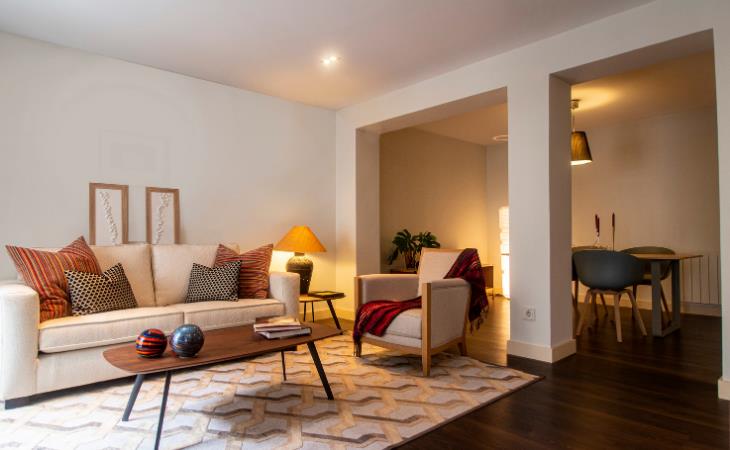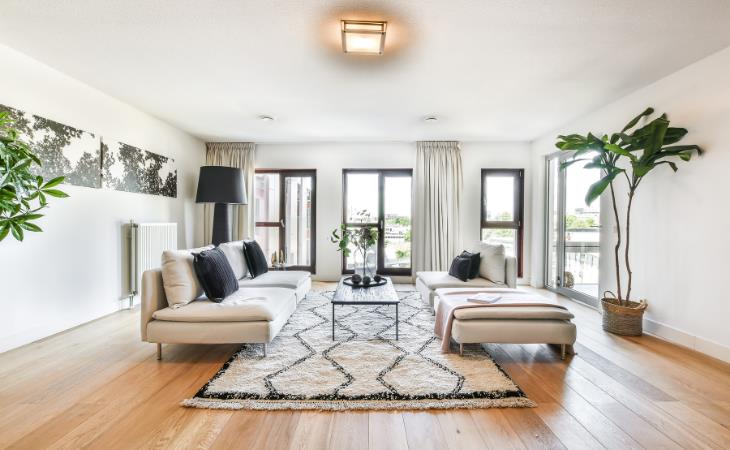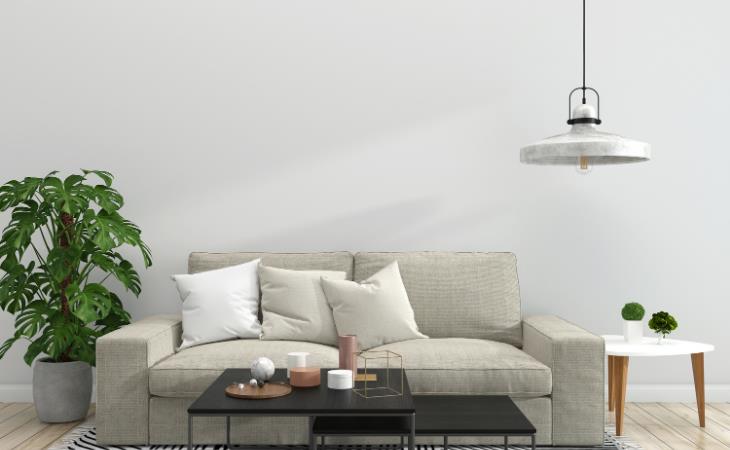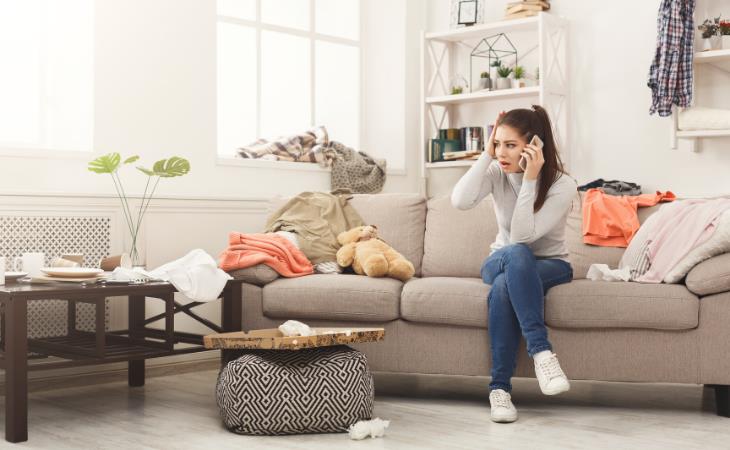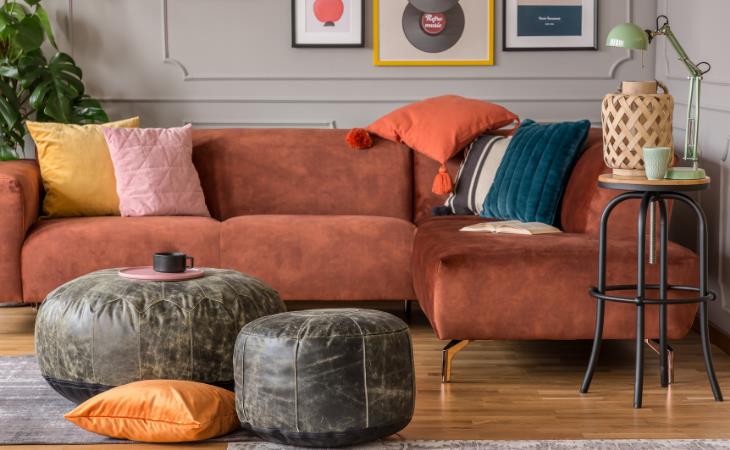One of the most common mistakes homeowners make when placing a sofa in their sitting room is failing to consider the proportions and scale of the area as well as the sofa itself. A huge sofa in a small sitting room can dominate the space, making it appear claustrophobic and uncomfortable. Choosing a small sofa for a large sitting room, on the other hand, can make the space feel empty and uninviting.
Solution: To prevent making this mistake, take precise measurements of your living room and carefully assess the size of the sofa you require. A common rule of thumb is to provide enough room around the sofa for easy mobility, while also making sure that other furniture pieces, such as coffee tables and chairs, complement the dimensions of the sofa.
Mistake 2: Disregarding Traffic Flow
Placing a sofa without considering the traffic flow in the sitting area can result in congestion and a lack of functionality. Your sitting room should have clear pathways for movement so that you and your visitors may easily navigate the space.
Solution: Imagine the natural flow of movement in your living room. Arrange the sofa so that there are clear paths and easy access to entrances, exits, and other important spaces. This will result in a more appealing and user-friendly environment.
Mistake 3: Neglecting the Focal Point
A common mistake is failing to recognize the value of a focal point in the sitting room and how the placement of the sofa might affect its prominence. The focal point should dictate the placement of your sofa and other furnishings, whether it's a fireplace, a wide window with a scenic view, or an appealing piece of artwork.
Solution: Place the sofa to compliment the focal point. If your living room has an inviting view, for example, position the sofa to face the window. This will improve the room's visual appeal and create a more harmonious mood.
Mistake 4: Disrupting Conversational Zones
A well-designed sitting room promotes contact and discussion. Placing the sofa in a way that disturbs natural discussion zones might reduce the space's comfort and social experience.
Solution: Organize your sofa and other seating options in a way that allows for simple conversation. Consider arranging your chairs in a "U" or "L" form to allow people to face each other comfortably. This structure fosters a sense of community and enhances the enjoyment of socializing.
Mistake 5: Neglecting Visual Balance
Visual balance is essential in interior design, and setting a sofa without taking into account the overall balance of the room might result in a disconnected and unpleasant appearance. Visual balance entails equally distributing visual weight around the room to produce harmony.
Solution: Make the sofa an essential factor for achieving visual balance. If one side of the room is overly furnished, balance it out by putting the sofa and other furniture on the other side. A visually appealing sitting area can also be achieved by including symmetrical layouts and using accessories to balance out the space.
Mistake 6: Disregarding Functionality
While aesthetics are important, your sofa placement options should also be guided by usefulness. Neglecting the practical aspects of seating arrangements can lead to a sitting area that is unsuitable for your everyday needs and activities.
Solution: Consider how you intend to use the sitting room to avoid making this error. If you frequently have gatherings, choose a sofa configuration that can accommodate more guests. If relaxation and comfort are your top concerns, arrange the sofa for the best TV viewing or reading pleasure. Incorporate storage solutions, such as side tables or shelves, which complement the arrangement of the sofa, boosting both elegance and usefulness.
Mistake 7: Not Considering Separate Seating Areas
Creating separate seated places inside a larger sitting room is a design method that provides practicality while also improving the visual attractiveness of the space. One common error is failing to consider the potential for various seating zones. This can result in a lack of intimacy and a fragmented feeling in the room.
Solution: Separate seating spaces are especially useful in bigger sitting rooms since they serve to divide the space and create cozy nooks for different activities. Consider the layout of the space and find spots where you may install alternative sitting arrangements, such as chairs, ottomans, or even smaller loveseats. These places are ideal for reading, conversing, or relaxing with a cup of coffee.

